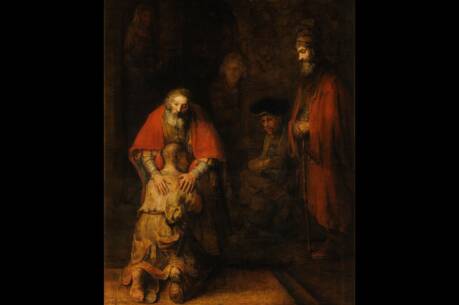A Different Kind of Inauguration 1
In the early church the Epiphany cycle included other manifestations of Jesushis baptism and the wedding at Cana. Today’s liturgy focuses on the third manifestation, the wedding feast at Cana, the first of Jesus’ signs, that is, symbols of the divine power at work in the incarnate Word. The Gospels this Sunday and next provide distinct pictures of the inauguration of Jesus’ public ministry.
The story does not stress the miraculous changing of water into wine, which is not described but only implied in the question of the headwaiter. This transformation is a sign of the deeper transformation that will occur in John’s Gospel. The narrative culminates with the words: at the beginning of his signs...Jesus revealed his glory and his disciples began to believe in him. The reaction of the disciples and the interaction between Jesus and his mother provide the dramatic focus to the narrative. Jesus begins his public ministry as the young couple begins life together. When the wine begins to run out, Jesus’ mother notes this and receives what seems to be a rebuke, Woman, how does this concern of yours affect me? My hour has not yet come. Yet she immediately says, Do whatever he tells you, and the sign is accomplished.
Mary, at this point in the Gospel, is a symbol of the many people who have great faith in Jesus but do not really understand who he is. Yet her faith will lead to the true manifestation of the glory of Jesus, since the reference to the hour points to the lifting up of Jesus on the cross, when he will draw all people to himself (Jn. 8:28; 12:32), and to that moment when Mary will embody discipleship in its fullness. In John’s Gospel Mary’s birth pangs occur at the foot of the cross, when she becomes the mother of all those whose love leads them to Jesus, epitomized by the presence of the disciple whom Jesus loved.
The reading from Isaiah uses the metaphor of spousal love to describe God’s love for the people. The wedding feast at Cana not only narrates the first sign of Jesus; it is also rich in biblical symbolism. The coming of the Messiah is often portrayed as a wedding banquet (see Mt. 22:1-14; 25:1-3). The amount of fine wine given by Jesus equals between 120 and 180 gallons, a quantity that reflects the Old Testament motif of an abundance of wine in the final days. This first sign is the manifestation of the grace and truth that has come through Jesus Christ (Jn. 1:17) and a summons to join in the celebration.
This article also appeared in print, under the headline “A Different Kind of Inauguration 1,” in the January 8, 2001, issue.







